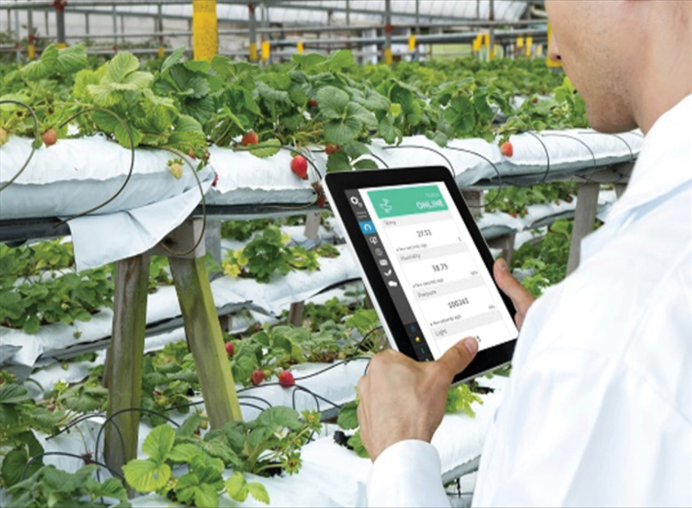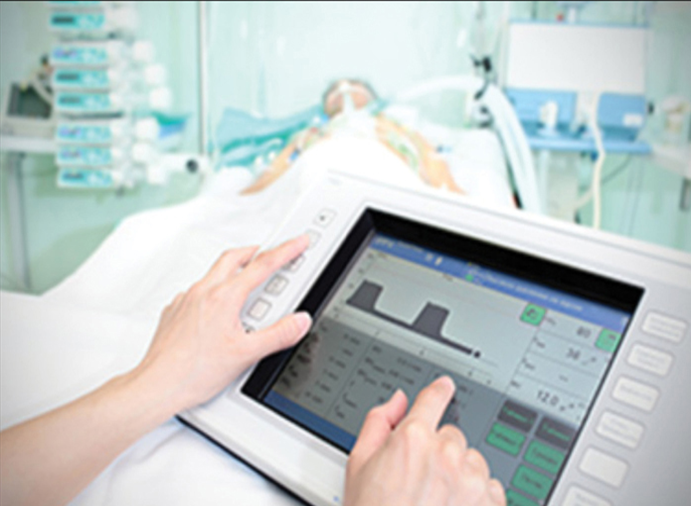Connected sensors can provide temperature, humidity, wind speed, barometric pressure, and soil moisture data. Actuators can then be automatically triggered based on current conditions. For example, a smart sensor can periodically send soil moisture data to a monitoring station. The monitoring station can then send a signal to an actuator to begin watering. The sensor will continue to send soil moisture data allowing the monitoring station to determine when to deactivate the actuator.

Figure 1-16 Using a Tablet to Monitor Sensors and Actuators
Medical devices such as pacemakers, insulin pumps, and hospital monitors provide users or medical professionals with direct feedback or alerts when vital signs are at specific levels. A tablet, shown in Figure 1-17, is often used to connect to these devices for monitoring purposes.

Figure 1-17 Using a Table to Monitor Medical Devices
Refer to the online course to complete this activity.
Computer networks transmit data from the original source to a final destination. This section introduces you to the different types of data and how the data is physically transmitted.
Refer to the online course to view this video.
Did you know that computers and networks only work with binary digits, zeros and ones? It can be difficult to imagine that all of our data is stored and transmitted as a series of bits. Each bit can only have one of two possible values, 0 or 1. The term bit is an abbreviation of “binary digit” and represents the smallest piece of data. Humans interpret words and pictures, computers interpret only patterns of bits.
A bit is stored and transmitted as one of two possible discrete states. This can include two directions of magnetization, two distinct voltage or current levels, two distinct levels of light intensity, or any other physical system of two discrete states. For example, a light switch can be either On or Off; in binary representation, these states would correspond to 1 and 0 respectively.
Every input device (mouse, keyboard, voice-activated receiver) will translate human interaction into binary code for the CPU to process and store. Every output device (printer, speakers, monitors, etc.) will take binary data and translate it back into human recognizable form. Within the computer itself, all data is processed and stored as binary.
Computers use binary codes to represent and interpret letters, numbers and special characters with bits. A commonly used code is the American Standard Code for Information Interchange (ASCII). With ASCII, each character is represented by eight bits. For example:
• Capital letter: A = 01000001
• Number: 9 = 00111001
• Special character: # = 00100011
Each group of eight bits, such as the representations of letters and numbers, is known as a byte.
Codes can be used to represent almost any type of information digitally including computer data, graphics, photos, voice, video, and music.
Refer to the online course to complete an activity where you convert characters to ASCII bits
